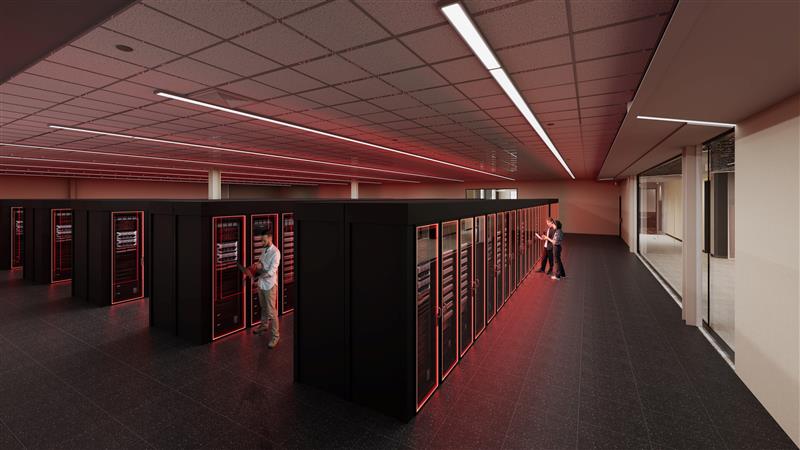
VISION
OIT will be a collaborative community of IT professionals that serves UA students, faculty, and staff with innovative and reliable technology resources.
MISSION
It is our mission to advance research, teaching, learning and operations at UA by providing exceptional technology services and support to students, faculty, and staff.


OUR VALUES
DELIVER
We deliver reliable IT services that our campus community can trust.
IMPROVE
We improve continuously, embracing new ideas and better ways of working.
RESPECT
We respect the knowledge, perspectives, and contributions of others.
COLLABORATE
We collaborate across teams and with the UA community to achieve shared goals.
RESPOND
We respond quickly and effectively to meet the evolving needs of our customers.
ADAPT
We adapt to change and drive innovation that benefits those we serve.
INNOVATE
We innovate by empowering our employees to create forward-thinking solutions.
ELEVATE
We elevate our culture by staying positive, solution-focused, and supportive.

LETTER FROM OIT LEADERSHIP
I am pleased to share the 2025–2028 Strategic Plan for the Office of Information Technology at The University of Alabama. This plan is both a reflection of our ongoing commitment to service and a roadmap for how we will support the University’s mission over the next three years.
Technology is foundational to the success of our academic, research, and administrative missions. Over the next three years, we are committed to building on that foundation, enhancing reliability, strengthening security, supporting innovation, and ensuring that the tools we provide are accessible, effective, efficient, and aligned with institutional priorities. This strategic plan was developed collaboratively, informed by conversations across campus, shaped by institutional priorities, and driven by our commitment to innovation, security, and service excellence.
Our goals are ambitious. From enhancing teaching and learning technologies, to supporting cutting-edge research, to improving user experience, accessibility, and cybersecurity, we are positioning OIT to be a proactive, trusted partner contributing to the continued success of our students, faculty, and staff. We are also investing in our people, fostering collaboration, and building an equitable culture that empowers our team to grow and lead.
Achieving these goals will only be possible through strong partnerships and shared commitment across our University community. I look forward to continued collaboration as we shape a future-ready digital environment at UA.
Thank you for your continued support and commitment to our shared mission. I am excited about the transformative opportunities that lie ahead over the next three years at The University of Alabama. The future is bright.
Roll Tide!
Mike Shelton, Vice Provost and Chief Information Officer


OIT DOMAINS
TEACHING & LEARNING
Support students and faculty with instructional technologies and services to ensure successful undergraduate and graduate learning experiences.
GOAL 1: Guide the institutional transition to a next-generation accessible learning environment through sustained training, support, and engagement strategies for faculty, staff, and students.
GOAL 2: Deepen strategic collaboration with academic support units to advance the integration of transformative instructional technologies.
GOAL 3: Align instructional technology infrastructure with the evolving demands of hybrid, online, and experiential learning models.
GOAL 4: Support the adoption of intelligent instructional design tools to enhance course development, promote personalization, and support
learning analytics.
GOAL 5: Partner with academic and student success units to deploy emerging technologies, such as AI tutors and learning analytics, that directly support student outcomes, including personalized instruction, supplemental learning, and career readiness.
RESEARCH
Provide IT resources and personnel to support and increase the University’s productivity and innovation in research.
GOAL 1: Establish a next-generation research computing environment that supports advanced analytics, artificial intelligence, and quantum exploration.
GOAL 2: Expand researcher capacity through targeted training and outreach in advanced computing, data science, and AI tools.
GOAL 3: Partner with academic and research stakeholders to align computing capabilities with interdisciplinary research priorities.
GOAL 4: Create a unified, secure research data environment that simplifies data lifecycle management and facilitates collaboration.
SECURITY & RISK
Secure and protect the University’s technology assets and the campus community through dynamic cybersecurity practices.
GOAL 1: Advance the University’s cybersecurity maturity by aligning with security and compliance frameworks and addressing strategic risk areas.
GOAL 2: Evolve endpoint protection strategies to reflect the complexity of modern work environments and distributed infrastructure.
GOAL 3: Leverage intelligent threat detection and response capabilities to secure sensitive research, institutional, and personal data.
GOAL 4: Establish a robust identity governance strategy to enhance secure access and ensure lifecycle consistency across digital identities as a foundational capability for seamless collaboration.
ENTERPRISE ARCHITECTURE
Establish effective procedures, processes and services as the foundation for University student, faculty and staff technology use.
GOAL 1: Reposition core infrastructure to support high-capacity, resilient environments that meet future research and institutional demands.
GOAL 2: Transition to an integrated, cloud-enabled administrative ecosystem to streamline operations and reduce redundancy.
GOAL 3: Build a comprehensive integration strategy to connect cloud and on-premises services, analytics, and emerging technologies into a cohesive digital ecosystem.
GOAL 4: Identify areas to improve efficiencies, unifying and consolidating IT services where necessary.
GOAL 5: Deliver a trusted, unified reporting and analytics platform by consolidating disparate data sources, decommissioning redundant systems, and leveraging cloud ERP integration to enable informed decision making across the University.
USER EXPERIENCE
Establish a consistent and reliable user experience for OIT services, tools and technologies.
GOAL 1: Improve and enhance self-service options for UA community members to quickly find answers to questions and resolve issues.
GOAL 2: Transform support operations through the adoption of intelligent automation and standardized service practices.
GOAL 3: Optimize digital platforms for mobile access and consistency across devices and learning environments, including adoption of digital accessibility standards and practices.
GOAL 4: Define and implement service experience standards that emphasize responsiveness, accessibility, and user empowerment.
GOAL 5: Implement a structured cross-functional training and education program that equips staff with a broader understanding of interconnected systems and processes, fostering a more unified and customer-centric support model.
COMMUNITY & COLLABORATION
Foster a collaborative environment while building relationships between OIT and the UA community to understand and meet technology needs.
GOAL 1: Foster a dynamic and supportive culture by investing in the personal and professional development of OIT team members by empowering career growth, cultivating leadership from within, and attracting and retaining exceptional talent.
GOAL 2: Facilitate a University-wide technology community to share insights, foster innovation, and elevate digital literacy.
GOAL 3: Strengthen strategic partnerships to co-develop future-ready technology solutions and amplify institutional value.
GOAL 4: Implement integrated communication strategies to increase awareness and adoption of IT resources and security practices.
GOAL 5: Promote cross-functional collaboration to align digital initiatives with institutional goals and emerging academic needs, including digital accessibility.

LEGENDS PORTFOLIO
These projects and initiatives represent key strategic priorities for the Office of Information Technology and are foundational to the successful execution of the 2025–2028 Strategic Plan.











